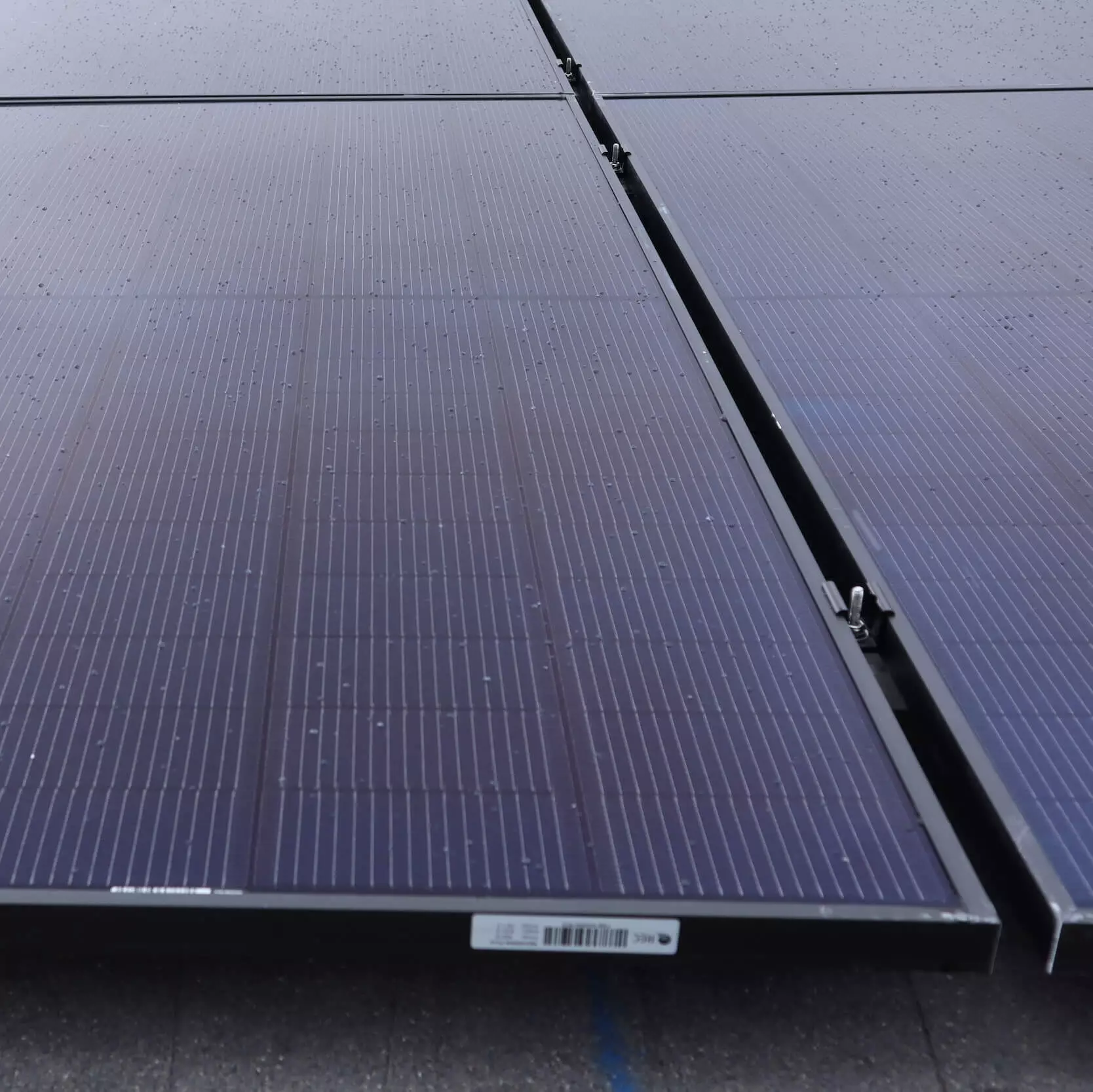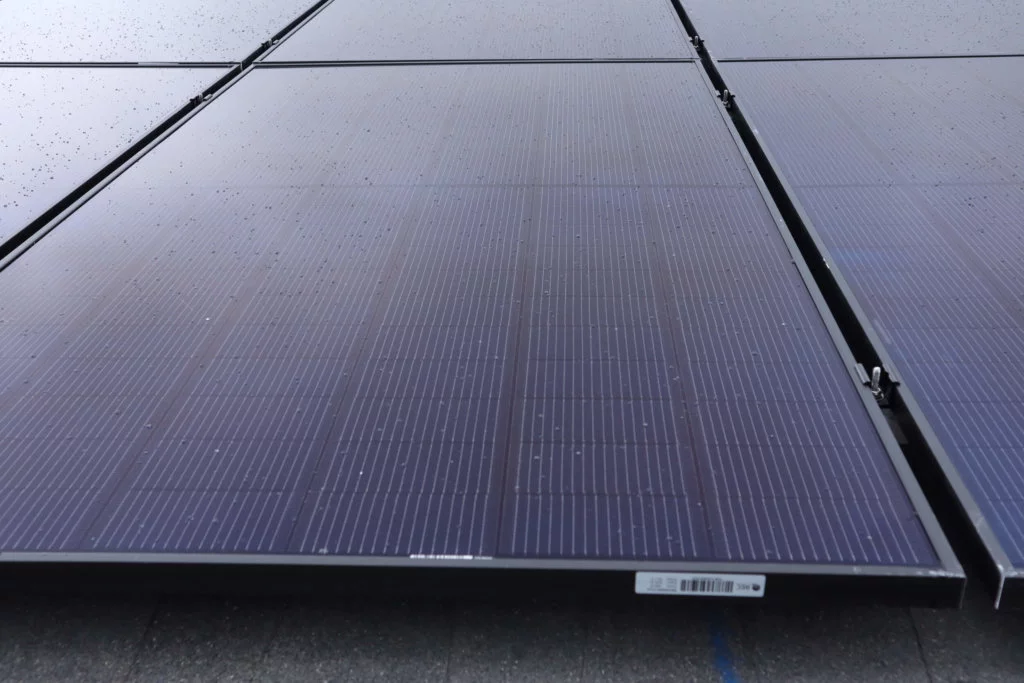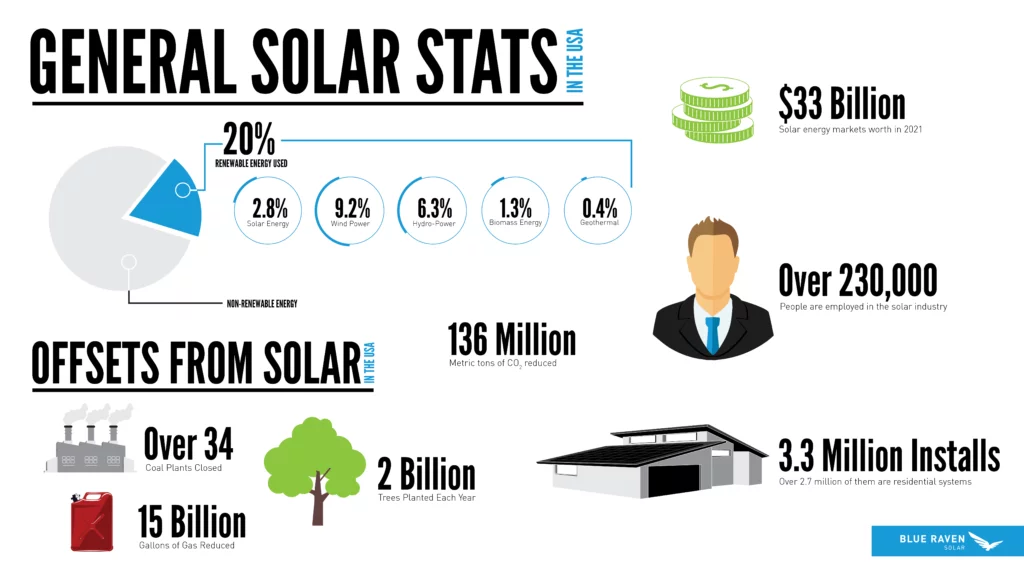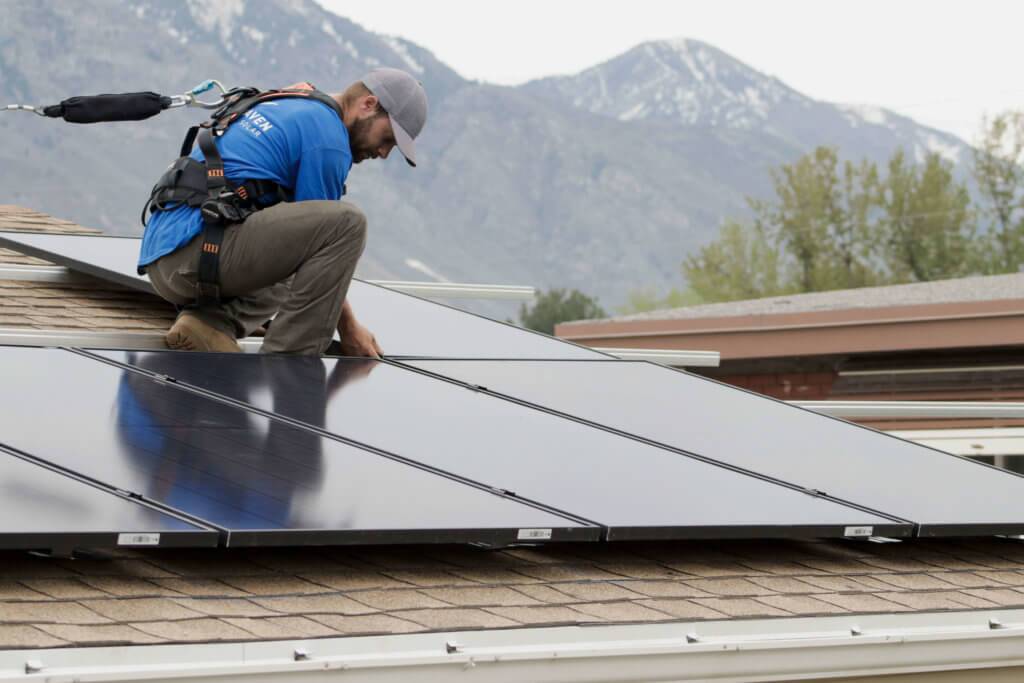
We say it all the time: solar is the fastest-growing renewable energy resource in the world.
But what does that mean, and how is that determined? What else is there to know about solar power’s standing in the world of energy?
While there is a massive amount of information and so many resources to learn from, information overload is real, and we want to help you avoid that. So, we decided to put together a list of solar panel statistics we feel are the most relevant.
Read on to become an expert in solar and its place among other energy resources.

General Solar Panel Statistics
The United States relies on renewables for approximately 20% of its energy needs. Only 2.8% comes from solar power, with 115 billion kWh of energy production. The other renewable resources are hydropower (6.3%), wind (9.2%), biomass (1.3%), and geothermal (0.4%).1
Despite that seemingly small number, 46% of all new electric capacity added to the grid in 2021 came from solar. That was a record, and the third year in a row for solar to be the largest contributor (40% in 2019, 43% in 2020).2
In 2021, 23.6 GW of solar capacity were installed. This brought the nation to 121.4 total GW of installed capacity, enough to power 23.3 million homes.3
Over 230,000 people are employed through the solar industry across all 50 states.4
Apple (398.3 MW), Amazon (369 MW), and Walmart (331 MW) are the top 3 solar consuming corporations as of 2019. They are closely followed by Target, Google, and other companies proving solar energy is becoming not only more popular, but more practical and affordable.4
The solar energy market in the United States is worth almost $33 billion as of 2021.4
There are over 3.3 million solar energy systems installed in the United States.4 Over 2.7 million of these systems are residential PV systems.5
With every system’s production accounted for, solar has effectively reduced 136 million metric tons of carbon dioxide emissions annually. This is equivalent to the reduction of gas consumption by 15 billion gallons, closing 34 coal-fired power plants, or planting 2 billion trees each year.4
In 2018, only 2.8% of solar panel systems also had an energy storage system. In 2021, the percentage jumped to 11.2%.

The Future of Solar
Solar deployment over the next decade is projected to increase by 66%.3
It is estimated that by 2050, solar will account for 20% of the nation’s energy needs.6
By 2030, 13% of US homes will be powered by solar energy.4
In 2010, installing a PV system cost over $4,600 per kilowatt, and by 2018, that cost had decreased to $1,200 per kilowatt. The cost in 2030 is projected to be between $340-$830 per kilowatt, a dramatic decrease from 2018’s prices.7
In 1960, PV solar panels were able to produce energy at 14% efficiency. January 2016 brought the first panels that achieved 29.8% efficiency, and in 2021, most residential panels produced around 20% efficiency. In April 2020, the first solar cell with 47.1% efficiency was developed with advanced technology inside very controlled environments, so although this efficiency is not available to residential systems, we are on our way to harnessing this incredible ability!8
Solar panel statistics show it is estimated that solar batteries will continue to become more popular and accessible, and the Solar Energy Industry Association projects 29.3% of solar installations will have storage installed by 2025.2

Homeowner Game Changers
Panel efficiency and cost are important parts of solar success and savings, and many homeowners use these as their reasoning for putting off adding solar to their homes. However, they will lose out on major savings and incentives that they can benefit from now, and there are no guarantees costs will decrease, or efficiencies will increase.
Contrarily, it is nearly guaranteed that several incentives will no longer be available in a few short years.
For example, beginning in 2022, the Federal Investment Tax Credit (ITC) allows homeowners to deduct 30% of their system cost from their income taxes. Many utility companies and local governments have their own rebates and incentives, and as solar becomes more popular, those have also decreased in savings and eligibility. So, if you want to go solar, the time is now, especially if you want to maximize your energy savings!
According to the Solar Energy Industries Association, there are over 10,000 solar businesses in the nation4, and your next step is to find out which ones you can trust to give you the best solar experience possible.
Solar demand is growing. California, Texas, and Florida are the top three states for solar capacity, but other states are catching up, and nearly every state has projections to double their installed solar capacity in the next five years.
Homeowners are seeing their neighbors make the switch to solar energy and are catching on to the savings and benefits, and they want in.

Make the Switch and Save with Blue Raven Solar
Good news – we want to help! You can save thousands on your energy bills over the lifetime of your system and become part of the movement to bring clean energy to our nation and to our planet.
Get started with a free, customized, no-commitment savings report, and experience the future of energy, today, with us.
Footnotes:
[1] https://www.eia.gov/tools/faqs/faq.php?id=427&t=3
[2] https://www.seia.org/solar-industry-research-data
[3] https://www.seia.org/us-solar-market-insight
[4] https://www.seia.org/research-resources/solar-data-cheat-sheet
[5] https://www.nrel.gov/docs/fy21osti/80427.pdf
[6] https://www.eia.gov/todayinenergy/detail.php?id=50357
[7] https://www.statista.com/statistics/1118626/solar-pv-installation-cost-projection/
[8] https://news.energysage.com/solar-panel-efficiency-cost-over-time/



Sorry, the comment form is closed at this time.